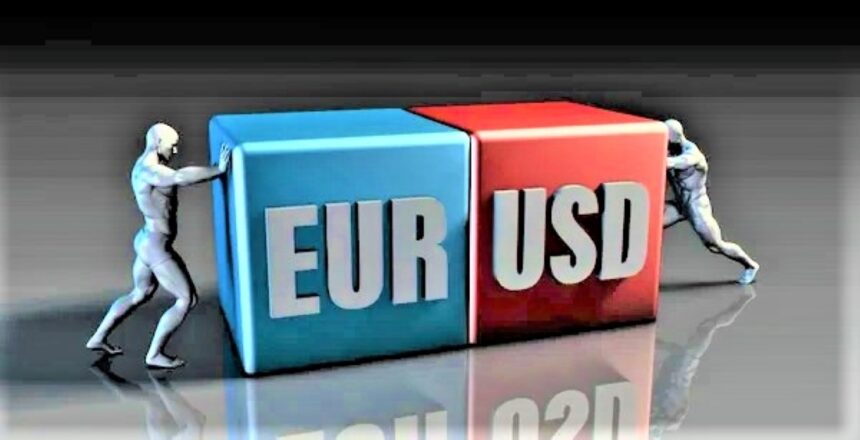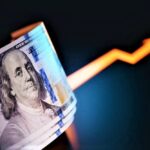EURUSD Retreats from Multi-Month Highs as Dollar Strengthens.
EURUSD pair retraced to near 1.0970 during European trading hours on Friday, correcting from its six-month peak of 1.1145 recorded in the previous session. The pullback comes as the US Dollar (USD) recovers from recent losses ahead of key US economic data releases and a critical speech by Federal Reserve (Fed) Chair Jerome Powell.
Market participants are on high alert as the upcoming Nonfarm Payrolls (NFP) report for March and Powell’s remarks could provide crucial insights into the Fed’s next policy moves. Meanwhile, geopolitical and trade concerns have added another layer of uncertainty, with US President Donald Trump’s imposition of reciprocal tariffs fueling global economic fears.
USD Strengthens Ahead of NFP Data and Powell’s Speech
The US Dollar Index (DXY), which tracks the performance of the greenback against a basket of six major currencies, has rebounded sharply to 102.60 from its six-month low of 101.25. This recovery has exerted downward pressure on the EURUSD pair, which had been riding high on expectations of a European Central Bank (ECB) rate cut and a weakening USD.
Economists expect the US economy to added 135,000 jobs in March, a decline from February’s 151,000. Meanwhile, the Unemployment Rate projected to remain steady at 4.1%, and Average Hourly Earnings anticipated to grow at a slightly slower pace of 3.9% year-on-year compared to the previous 4% increase.
Although the employment data crucial, its impact on market sentiment might be limited unless it shows an unexpected deviation. Investors more focused on inflation trends and their implications for the Fed’s policy direction. Powell’s speech later in the North American session could offer key guidance on how the central bank plans to navigate the economic challenges ahead.
Trump’s Reciprocal Tariffs Shake Global Markets
Another significant factor weighing on the markets is President Trump’s recent move to impose reciprocal tariffs, which escalated concerns about global economic stability. The new tariffs include a baseline 10% levy on all US imports, set to take effect on Saturday. Additionally, country-specific tariffs ranging from 10% to 49% have been introduced, raising fears of retaliatory actions by affected nations.
The market response has been swift, with investors reassessing their outlooks for inflation and economic growth. A full-scale trade war could stoke inflationary pressures in the US while simultaneously slowing economic activity, leading to a challenging scenario of stagflation. This would complicate the Fed’s policy decisions, making it difficult to balance interest rate cuts with the need to control inflation.
Market Outlook: Rate Cut Expectations Strengthen
The CME FedWatch Tool indicates that traders have grown increasingly confident that the Fed could initiate rate cuts as early as the June policy meeting. This sentiment was reinforced after Trump’s tariff announcement, which heightened economic uncertainty. The probability of the Fed keeping rates within their current range of 4.25%-4.50% has dropped significantly to 65.8%, down from 81.5% just a week ago.
Investors believe that the Fed may be forced to adopt a more accommodative stance if economic conditions deteriorate. However, Powell’s speech closely scrutinized for any hints regarding the central bank’s preferred course of action.
EUR Struggles Amid Eurozone Economic Concerns
The Euro has also faced headwinds, with concerns growing over the potential fallout from Trump’s tariffs. Market participants fear that these tariffs could slow down the Eurozone’s economic growth, leading to reduced trade activity and overall economic momentum. European Commission (EC) President Ursula von der Leyen has warned that the tariffs could have dire consequences, not just for Europe but for millions of people worldwide.
Von der Leyen further stated that the Eurozone is prepared to retaliate with countermeasures if negotiations with Washington fail. This potential trade dispute adds another layer of uncertainty to the global economic outlook, keeping investors on edge.
Meanwhile, expectations for an ECB rate cut in April weighed on the Euro. ECB policymakers believe that the inflationary impact of Trump’s tariffs will be temporary and not a significant hurdle to further monetary easing. The possibility of lower interest rates in the Eurozone makes the Euro less attractive to investors, further contributing to its recent weakness against the USD.
Key Takeaways and Market Implications
EURUSD retreated below the 1.1000 level, correcting from its six-month high as the USD regains strength ahead of key US economic events.
The US Dollar Index (DXY) rebounded to 102.60, recovering from its multi-month low of 101.25, driven by cautious investor sentiment and anticipation of Fed policy cues.
March NFP data expected to show a hiring slowdown, with only 135K jobs added compared to 151K in February. The Unemployment Rate is likely to remain steady at 4.1%.
Trump’s reciprocal tariffs have intensified economic uncertainty, raising concerns about inflation, slower economic growth, and potential trade wars.
The Fed’s June rate cut expectations have strengthened, with traders increasingly betting on a policy shift in response to evolving economic risks.
The Euro remains under pressure amid ECB rate cut expectations and potential trade tensions with the US.
Looking Ahead: Market Focus on Powell’s Speech
As the trading day progresses, all eyes will be on Fed Chair Jerome Powell’s speech. His remarks could provide crucial insights into the Fed’s stance on interest rates and how policymakers plan to address economic risks arising from the latest trade developments.
If Powell signals a dovish shift and acknowledges growing concerns over economic growth, the USD could face renewed selling pressure, potentially lifting EURUSD back above the 1.1000 threshold. However, if Powell adopts a more hawkish tone, emphasizing inflation control over growth concerns, the USD could extend its recovery, keeping EURUSD under pressure.
Conclusion: A Volatile Path Ahead for EURUSD
The EURUSD pair remains highly sensitive to evolving market dynamics, with multiple factors influencing its trajectory. The interplay between US labor market data, Fed policy signals, and global trade tensions will continue to drive volatility in the forex markets.
For traders and investors, it is crucial to stay informed and react swiftly to new developments. The coming hours and days could see significant swings in EURUSD, depending on how market participants interpret economic data and policy signals from central banks. As always, risk management remains key in navigating these turbulent market conditions.









